All about ticks on grapes

You can lose the entire grape harvest simply without noticing the appearance of a tick on the bushes in a timely manner. To combat this pest, preventive measures and timely treatment with ready-made or home-made preparations should be combined.
Types and description of pests
There are several varieties of mites that can be found on grapes. One of the most common is grape spider mite... It looks like a small insect with a length of 0.4 to 0.6 millimeters, whose color can be either yellow or gray-green. The pest hibernates in a pile of fallen leaves or right inside the bark of a bush.
When the first leaves appear, it moves to the green part of the grapes. Already at a temperature of + 13 ° C, a female spider mite can lay eggs - from 70 to 140 at a time.
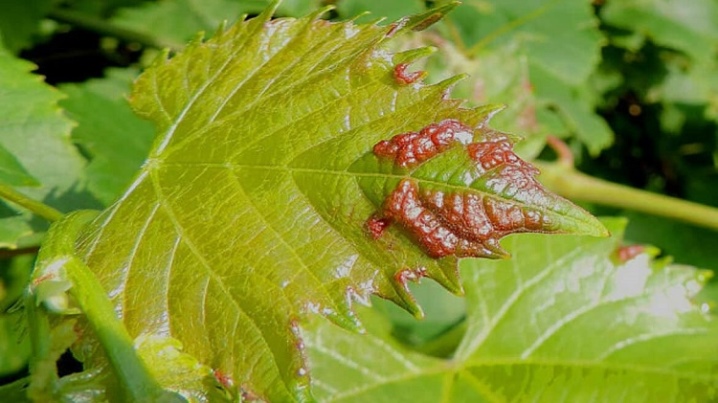
A week later, the hatched larvae begin to actively consume the juice of the leaves and shoots of the culture. Poisonous saliva leads to surface deformation at puncture sites. Small bumps are also formed on the outside. After a couple of weeks, the larvae grow into sexually mature individuals, and yellow spots form on the leaf blades, after which they dry out. In addition, the lower part of the leaves is covered with a thick layer of cobweb. It should be mentioned that the spider mite first multiplies on low-growing weeds, and then moves to the grapes themselves.
European red tick used to live only on apple trees, but today it is increasingly found on vines. After overwintering under the buds, insects begin to actively reproduce with the end of the spring frost. Pest females are reddish, while males are green-brown. The eggs of the mite are also colored reddish, so their large clutches are visible even to the naked eye. The leaves of the damaged shrub gradually take on a brownish-golden hue.
Grape felt itch considered not as dangerous pest, although the most common for this culture. After wintering in the buds, an insect 0.2 mm in size with an oval body of white or yellow color migrates to the lower surface of the leaf blade and begins to feed on its contents. The other side is covered with whitish concave formations of fluffing "felt". Nevertheless, from such an impact, the leaves do not die off, but continue to cope with their main life activity.
Grape leaf mite is a very small parasite, which greatly complicates the fight against it. For the winter, the insect takes refuge in the kidneys, whose contents it consumes. In grapes under the attack of this mite, the shoots deteriorate: they become weak and crooked, and also often dry out, not having time to grow.
Turkestan tick becomes visible on grapes in the first half of summer. Fertile females lay almost 500 eggs per season.
Another mite species on this crop is kidneycausing severe damage to the vine. Over the summer, about 6-9 generations manage to visit the bush, feeding on the contents of the buds and damaging the rudiments.
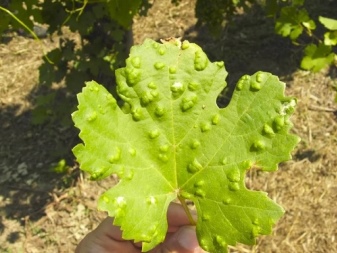
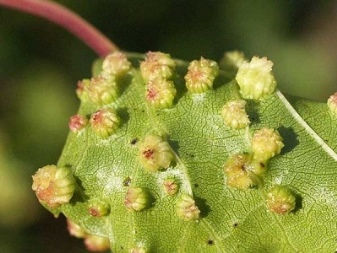
Signs of defeat
The fact that grapes suffer from ticks is indicated by the appearance on the leaves light spots, usually on the outside. Over time, these formations change their shade to brown, and then the plates themselves twist, shrink and fall off.Affected leaves are also covered from the inside with a dense cobweb - its maximum concentration is found on the stems and internodes. If you look closely, then right on it you will be able to see moving points - the pests themselves. When attacked by a red tick, the leaves quickly acquire a bronze color.
In addition, the surface is covered with a reddish bloom from insect eggs.
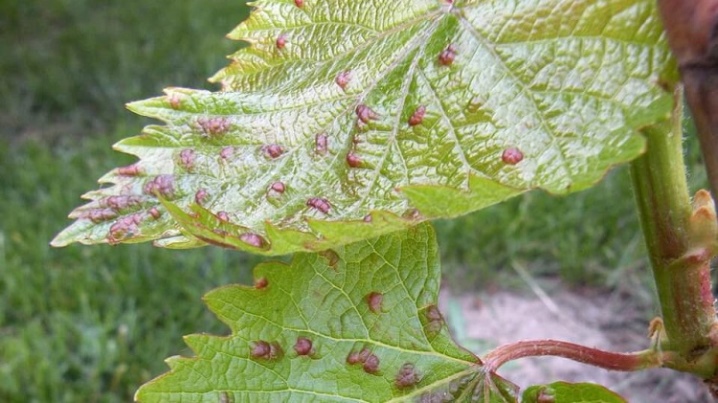
Control methods
Each gardener decides for himself whether to treat the planting with chemicals or to limit himself to spraying with folk remedies. If the infection has already become widespread, then it is better to combine several methods.
Agrotechnical
Agrotechnical methods of control include sufficient irrigation of the bushes under good pressure, as well as the burning of severely affected bushes and leaves. Spraying plantings with soapy water will also reduce the pest population. In vine beds, it is important to regularly remove weeds. This procedure plays an especially important role at the beginning of the season.
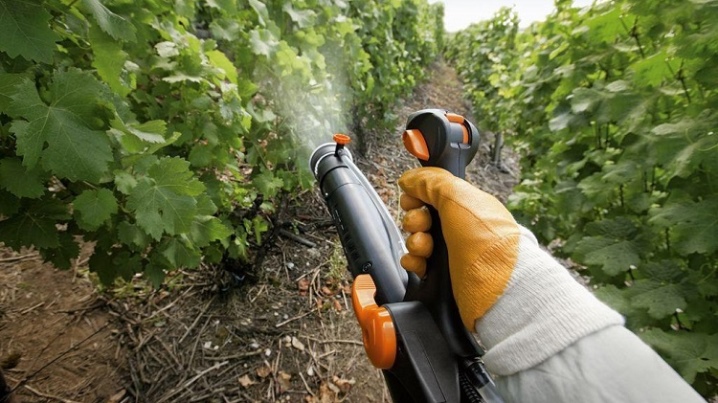
Chemical
With a serious lesion, it is necessary to process grapes from parasites aggressive insecticides... For example, 75% colloidal sulfur is suitable for this purpose. This substance, penetrating into insect cells, forms hydrogen sulfide, which is a poison. Experienced gardeners recommend using sulfur-containing "Tiovit Jet" or "Cumulus"... The big plus of sulfur is that it can be applied even the day before harvest. Spraying is best done on a warm, but not hot day, since high temperatures lead to a deterioration in the required properties of sulfur.
Transparent concentrate "Fufanon" destroys insects, but does not harm the plants themselves. The insecticide begins to act after 30-60 minutes, but only on condition that the drug does not drain from the leaf plates. Treatment Bi-58 held in summer, during the growing season. The insecticide is diluted with water, after which it is used to spray the crop. The required effect also gives "Omite"resistant to sun and rain. The active effect of the drug lasts for 3 days.
Aggressive "Actellik" v large doses can have a negative effect even on humans, so it should be used with great caution. Its action begins in 10-120 minutes, and lasts for a couple of weeks. The same can be said about "Vertimek", which should not be used during bud break.
It should be mentioned that when working with insecticides, it is necessary to protect the respiratory tract, as well as the skin and clothing.
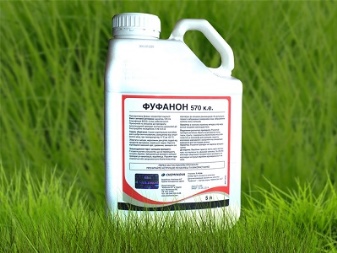
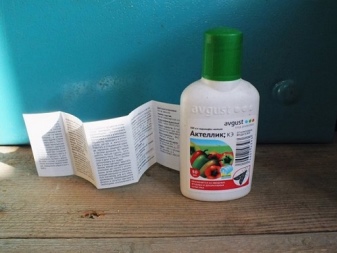
Biological
The most famous biological product is Fitoverm... After using it, unlike insecticides, the fruits are allowed to be harvested already on the 4th day. The tool effectively fights ticks, but its protective properties do not differ in duration, and the crop requires several treatments per season. Fitoverm can be used immediately after flowering. Another high-quality biological product is called "Aktofit"... Its use is recommended in calm, dry and moderately sunny weather. Processing is most conveniently carried out using a fine-dispersed sprayer.
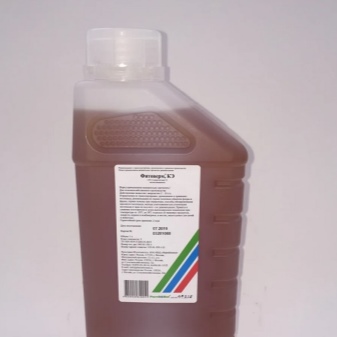
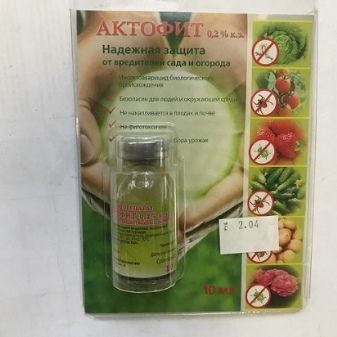
Folk
Treatment with folk remedies against ticks is most suitable for the early stage of the spread of the problem. A kilogram of dry black henbane is soaked for 12 hours in 10 liters of water. Before use, 40 grams of soap shavings are added to the liquid, and the whole mixture is filtered. The finished composition must be used with caution for treatment, since all parts of the plant are poisonous. It is customary to sprinkle it on the bush, although some gardeners prefer to simply pollinate the grapes with dry bleached.
Another fairly effective remedy is dandelion... Its fresh leaves in the amount of 500 grams are poured with a bucket of heated water and infused for about 3 hours.The finished mixture is filtered and combined with a soapy solution. It is necessary to spray the grapes with a home-made preparation immediately, since it is not allowed to store it. Processing is carried out during budding and after flowering.
Medicines will also help get rid of the tick. chamomile... A kilogram of dried herb or 3 kilograms of fresh herb is combined with 10 liters of hot water. By infusing the mixture for 12 hours and combining it with soap, you can treat the plant by spraying. Such processing is allowed to be carried out 2-3 times.
With help tobacco real pest control can be done in two ways. The first involves fumigating the beds, and the second is spraying the bushes. To prepare a medicinal product, 400 grams of the main ingredient will have to be poured with 10 liters of water, insisted for about a day, and then boiled for a couple of hours. The strained mixture is supplemented with soap and filled with another 10 liters of water.
If it grows in the garden horseradish, then it can also be used to combat insects. Leaves with shoots will need to be chopped in a meat grinder. The resulting mass is filled with about 1/3 of the bucket, and the remaining space is filled with water. Having infused the solution for about an hour, it can be used for evening or morning spraying.
Processing plantings may be effective ammonia... The drug in the amount of 25 milliliters will be enough to dilute in 10 liters of water, and then add soap shavings for better adhesion. As a rule, a single treatment is enough for the grapes, but re-spraying can be organized after a couple of weeks.
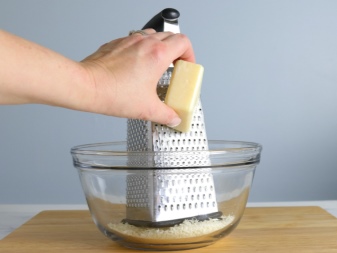
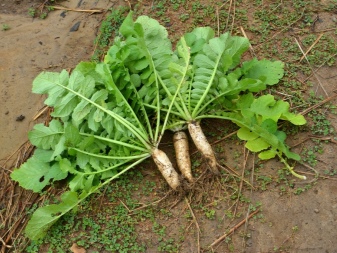
Prevention measures
To protect the vines from the appearance of a tick, you should timely carry out preventive measures. It is very important to destroy last year's foliage, fallen bark, cut shoots, debris - that is, all objects that pests choose for wintering. In spring and autumn, the soil around the beds should be dug up, and in the hot months it should be cultivated. "Akarin" or "Neoron". Damaged foliage should be quickly removed from the bushes so that the ticks do not have the opportunity to crawl from the bottom up. Throughout the growing season, you will have to monitor so that the vine does not come into contact with the ground - it is more correct to tie it up.
Fertilization or insecticide treatment should be carried out according to the instructions, in order to avoid intoxication of the crop. Of course, regularly you need to inspect the plantings for the presence of insects.
Purchased seedlings must be quarantined before planting in open ground. It is equally important to regularly spray the bushes, as this pest prefers dryness.


For information on how to competently deal with a grape mite, see the next video.













The comment was sent successfully.